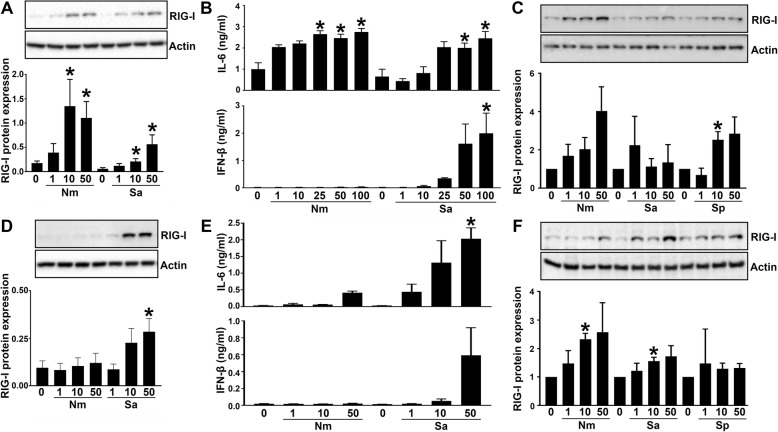Fig. 1.
Bacterial infection stimulates cytokine release and increased RIG-I protein expression in glial cells. The human microglial cell line hμglia (a, b), primary murine microglia (c), primary human astrocytes (d, e), and primary murine astrocytes (f) were infected with N. meningitidis (Nm), S. aureus (Sa), or S. pneumoniae (Sp) at an MOI of 1, 10, or 50 (glial:bacteria). At 24 h post infection, cell lysates were collected and analyzed for RIG-I protein expression via immunoblot analysis (N = 3). RIG-I protein expression relative to that produced by unstimulated cells is shown in the corresponding bar graphs below each representative immunoblot (a, c, d, f). Cells were infected for 2 h with bacteria and at 24 h post infection, cell supernatants were collected and analyzed for cytokine production by specific capture ELISA for IL-6 and IFN-β (b, e). Data are expressed as mean ± SEM for a minimum of three independent experiments. Asterisks denote statistical significance compared to unchallenged cells as determined by Student’s t test (p < 0.05)

